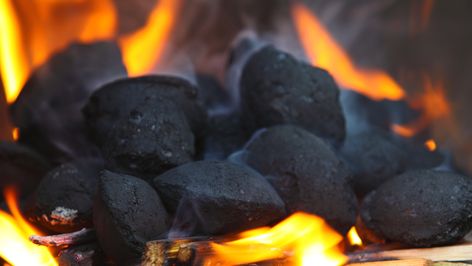Clean Cooking Access as a Catalyst for an Inclusive Energy Transition in Africa
Israel Olaniyan Tweet
In 2021, global carbon emissions reached 37.12 billion tonnes of CO2. Africa, despite accounting for only 4% (1.45 billion tonnes) of these emissions, is the most vulnerable to climate disasters. According to the International Rescue Committee, seven out of the ten most climate-vulnerable countries are in Africa.[1]
Over the past decade, escalating temperatures, unpredictable weather patterns, and environmental degradation have cast a looming shadow over the livelihoods of millions across Africa. The World Meteorological Organization stated that in the past 50 years, drought-related hazards have claimed the lives of over half a million people and led to economic losses of over 70 billion USD in the region. It is estimated that by 2050, climate impacts could cost African nations 50 billion USD annually.[2]
The African Climate Action Summit, convened in Nairobi, Kenya from September 3rd to 7th 2023 brought together African leaders and global delegates to explore opportunities for advancing climate action throughout the continent. During the summit, the spotlight decisively shifted to an often underestimated yet profoundly impactful facet of climate action: clean cooking.[3]
Nearly a third of the world’s population still rely on polluting open fires and inefficient stoves for cooking, contributing to 3.2 million premature deaths and harming livelihoods, the climate, and the environment.[4] Historically, women in Africa have borne the disproportionate burden of traditional cooking practices, often relying on open fires or rudimentary stoves fueled by biomass. The deleterious effects on their health, overall well-being, and economic prospects have been profound.[5] However, the winds of change are beginning to blow. Clean cooking has emerged as a beacon of hope, potentially addressing a nexus of interconnected issues.
The mid to long-term plan is for clean cooking technologies to be mass-produced and introduced as viable alternatives to conventional biomass fuels across the continent. Beyond curtailing harmful carbon emissions, this transition serves as a bulwark against deforestation, preserving the invaluable natural heritage upon which we all depend. Furthermore, it empowers women by mitigating the health hazards associated with indoor air pollution and by creating income-generating opportunities through the production of these clean energy sources.
No doubt, clean cooking stands as a linchpin in the collective global endeavour to combat climate change, stimulate green investments, ensure equitable energy access, preserve natural ecosystems, and empower women, especially in Sub-Saharan Africa where over 40% of the world’s poorest families live.[6] Therefore, the growing recognition of clean cooking’s multifaceted benefits underscores its potential as a catalyst for a sustainable future and inclusive energy transition across Africa.
Kenya and Sierra Leone, distinguished for their steadfast commitment to sustainable development, have taken a resolute stride forward by establishing Clean Cooking Delivery Units. Housed at the highest echelon of government within the Office of the President, these units signify a bold approach to mobilize private sector capital and carbon finance in the pursuit of their nations’ ambitious climate and energy objectives. They transcend mere bureaucratic machinery and stand as dynamic engines of change, propelling clean cooking to the forefront of national agendas. Their ultimate aim is to steer towards the audacious target of achieving universal access to clean cooking by 2028.[7]
In Nigeria, Sydani Energy aims to spearhead a sustainable cooking initiative – “Briquette as a Clean Energy Source for Rural Communities in the BAY States of Nigeria.” – This project, currently in the design phase, embodies the essence of transformative change. It shines as a guiding light in the continuous pursuit of sustainable cooking practices. In its inaugural pilot phase, spanning three states, this project holds the potential to make a profound difference in the lives of local communities, with a deliberate emphasis on empowering women.
The project’s objectives are clear: introduce briquettes as an alternative, viable, and sustainable energy source, reduce carbon emissions, enhance local livelihoods, and contribute to climate adaptation efforts. The project seeks to empower local youth, especially women, by establishing community-based briquette production units and providing comprehensive training to drive this transformative change. It also emphasizes awareness campaigns to educate communities about the manifold benefits of clean cooking.
Furthermore, in the most recent update to Nigeria’s Nationally Determined Contributions, the Federal Government outlined very audacious energy targets, one of which is to convert at least 48% of the population (26.8 million households) to using LPG and 13% (7.3 million households) to using improved cookstoves by 2030.[8] There is therefore no gainsaying the fact that the Briquette project aligns on all fours with Nigeria’s ongoing commitment to mainstream clean cooking in just 9 years.
The project also reinforces the catalytic power of innovation, collaboration, and sustainable cooking practices already being implemented in other continents of the world. It is emblematic of a broader paradigm shift towards cleaner, more sustainable, and equitable cooking solutions throughout Africa. It is a pioneering effort deserving of our unwavering attention, support, and emulation.
We invite the government, private sector, green investors, and developmental stakeholders to join forces with Sydani Energy as we seek to drive the adoption of clean cooking in Nigeria’s northern region. We must not underestimate the potential of clean cooking to substantially bend the global emissions curve as it is rooted in inclusivity, sustainability, youth and women empowerment, and ensures a just transition. Much more it illuminates Africa’s path towards a sustainable future.
References
[1] Aljazeera. Explainer. 2023. How much does Africa contribute to global carbon emissions? https://www.aljazeera.com/news/2023/9/4/how-much-does-africa-contribute-to-global-carbon-emissions
[2] World Meteorological Agency. 2022. State of Climate in Africa. https://public.wmo.int/en/media/press-release/state-of-climate-africa-highlights-water-stress-and-hazards
[3] Clean Cooking Access. News Report. 2023. https://ow.ly/sgmG50PIgYV
[4] Clean Cooking Access. News Report. 2023. CCA, AGF, and UNCDF Launch Partnership to Mobilize $100 Million for Clean Cooking. https://cleancooking.org/news/cca-agf-and-uncdf-launch-partnership-to-mobilize-100-million-for-clean-cooking/
[5] Clean Cooking Alliance. 2022. Five Ways CCA is Prioritizing Women in Clean Cooking. https://cleancooking.org/news/five-ways-cca-is-prioritizing-women-in-clean-cooking/
[6] World Bank Data Blog. 2019. Half of the World’s Poorest Families Live in just 5 Countries. https://blogs.worldbank.org/opendata/half-world-s-poor-live-just-5-countries
[7] Clean Cooking Alliance. 2023 News. https://ow.ly/sgmG50PIgYV
[8] UNFCCC. Update to Nigeria’s Nationally Determined Contribution. 2021. Available online. https://unfccc.int/sites/default/files/NDC/2022-06/NDC_File%20Amended%20_11222.pdf




